France PMI composite rises to 49.9, back on track driven by services
France PMI Manufacturing fell from 46.2 to 44.9 in April, below expectation of 46.9. But PMI Services rose from 48.3 to 50.5, above expectation of 49.0, an 11-month high. PMI Composite rose from 48.3 to 49.9, also an 11-month high.
Norman Liebke, an economist at Hamburg Commercial Bank, has confidently stated that the French economy is “back on track,” highlighting the significant role of the services sector in driving this recovery.
Meanwhile, inflation levels remain a concern, with elevated prices driven by higher wages along with rising energy and oil prices. Both output price inflation and input prices saw reacceleration, maintaining levels clearly above 50.
Sterling rises as Brexit deal finally clinched in Brussels
Sterling surges on news that a Brexit deal is finally clinched in Brussels today, after marathon discussions this week. The news also take stocks and commodity currencies higher. The agreement came just a few hours ahead of the EU summit. European Commission President Jean-Claude Juncker said in a letter that he would recommend EU27 leaders to approve the deal. And it’s a “high time” to complete the Brexit process.
UK Prime Minister Boris Johnson also said “we have a great new Brexit deal”. His spokesperson added that Johnson is confidence that the new Brexit deal will go forward for a vote in the parliament on Sunday. And, “The public would expect if the deal is passed, for MPs to do everything they can to pass it on time and yes we are confident that we can do that, referring to leaving EU on October 31.
Asia in crisis mode after US stock crash, a look at HSI
Following the stock market crash in the US, Asia is also in crisis mode. At the time of writing, Nikkei is down -3.89%, Singapore Strait Times is down -2.7%, and China Shanghai SSE is down -4.52%. SSE has now broken 2016 low at 2638, which is a key support level, not for trade war, but for the crash in the US.
Hong Kong HSI gapped down at open and is now down over -1000 pts, or -3.84%.
The down trend started earlier this year as dragged down by China’s SSE. Now DOW also joined the party. Based on current momentum, HSI heading to 61.8% retracement of 18278.8 to 33530.6 at 24105.0 for sure. Realistic chance of some support could be found at 76.4% retracement at 21878.23. But let’s see. It could be worse if China SSE accelerates further downward after breaking 2600 handle.
New Zealand’s exports down -18% yoy in Sep, China leads decline again
New Zealand’s trade balance for September reveals a deficit of NZD -2.3B, driven by a notable fall in goods exports of -18% yoy, bringing the total to NZD 4.9B. The decline in imports was also significant, dropping by -15% yoy to NZD 7.2B.
A striking feature of this downturn is the notable reduction in exports to China, marking a deviation from the consistent growth observed over the past decade. International trade manager Alasdair Allen noted, “Over the past decade, exports to China have been steadily increasing, with a flat period during COVID-19, but in recent months this has started to shift.”
Breaking down the export figures by country, China recorded a 20% yoy drop, equivalent to NZD 332 million, leading the downturn. Exports to Australia, US, EU, and Japan also experienced declines, calculated at -3.3%, -6.7%, -26%, and -12% yoy, respectively.
On the imports front, China once again played a significant role, with imports from the country decreasing by -17% yoy. Imports from EU and Australia also dropped by -1.5% yoy and -21% yoy respectively. Imports from South Korea contracted by -16% yoy. In contrast, imports from US saw a growth of 6.1% yoy.
EU Oettinger: It’s only my personal opinion regarding Italy budget
In response to a to Der Spiegel’s report that Italy budget is not inline with EU obligations Günther Oettinger, European Commissioner for Budget and Human Resources tweeted to clarify.
In short, he rejected the call that the commission has made a decision and added that it’s only his personal opinion.
US Treasury Mnuchin said it’s fake news about Trump push for WTO exit
US Treasury Steven Mnuchin calls the report about Trump wants to exit WTO “fake news” and an “exaggeration.”
Mnuchin added that “the president has been clear, with us and with others, he has concerns about the WTO, he thinks there’s aspects of it that are not fair, he thinks that China and others have used it to their own advantage, but we are focused on free trade. That’s what we’re focused on – breaking down barriers.”
Earlier today, Axios reported, quoting unnamed source” that Trump also said “I don’t know why we’re in it. The WTO is designed by the rest of the world to screw the United States.” The reported added that “sources with knowledge of the situation say the Trump administration will continue to call attention to various ways in which the U.S. encounters what some Trump advisers perceive is unfair and unbalanced treatment within framework of the WTO.”
Eurozone industrial production up 1.5% mom in Aug, EU up 1.1% mom
Eurozone industrial production rose 1.5% mom in August, above expectation of 0.5% mom. Production of capital goods rose by 2.8% mom, durable consumer goods by 0.9% mom and non-durable consumer goods by 0.7% mom, while production of intermediate goods fell by -0.5% mom and energy by 2.1% mom.
EU industrial production rose 1.1% mom. Among Member States for which data are available, the highest monthly increases were registered in Ireland (+16.6%), Estonia (+5.0%) and Denmark (+4.3%). The largest decreases were observed in Sweden (-7.0%), Belgium (-6.1%) and the Netherlands (-1.5%).
UK PMI construction: Year-ahead business outlook at second lowest since 2013
UK PMI construction dropped to 52.1 in September, down fro 52.9 and missed expectation of 52.6. The key points are “all three sub-sectors record a loss of momentum”, “solid increases in new work and employment”, but “business optimism at second-lowest level since February 2013”.
Tim Moore, Associate Director at IHS Markit and author of the IHS Markit/CIPS Construction PMI®:
“UK construction firms experienced softer output growth during September, with house building, commercial and civil engineering all losing momentum. A lack of new work to replace completed projects meant that civil engineering saw an overall decline in activity for the second month running and remained the main laggard.
“There were mixed signals in terms of the near-term outlook. New order books strengthened to the greatest extent since December 2016, which indicates that construction workloads remain on an upward trajectory. Rising demand and tight labour market conditions led to robust job creation, with survey respondents commenting on a larger-than-usual uptake of apprentices in September.
“However, latest data showed that overall confidence about the year-ahead business outlook was among the lowest seen since the start of 2013. Construction companies continued to note that political uncertainty acted a key drag on decision-making, with Brexit worries encouraging a wait-and-see approach to spending among clients. The main areas reported as likely to see a boost in the coming year were construction work related to large-scale energy and transport projects.”
Australia PMI composite rose to 56.2, rounds off a strong quarter, but inflation a concern
Australia PMI Manufacturing rose slightly to 57.0 in March, up from 56.9. PMI Services jumped to 56.2, up from 53.4. PMI Composite also rose to 56.2, up from 53.7.
Pollyanna De Lima, Economics Associate Director at IHS Markit, said: “The latest results rounded off a strong quarter for the private sector, the best since the second quarter of 2017… Inflation remains an area of concern, with March data showing the strongest rise in input costs in the survey history…. Supply-chain disruption was cited by panellists as the main driver of inflation, a factor that also restricted business optimism towards growth prospects.”
ECB Mersch: Prerequisites there for inflation, but easy policy still needed
ECB Executive Board member Yves Mersch sounded upbeat on his comments yesterday. He said that “all prerequisites for a sustainable adjustment of inflation to our objective are given.”
The central bank could continue to cut down its asset purchases gradually as inflation outlook improves. He’s concerned that there could be excessive market reactions if the asset purchases are reduced too quickly. And that would undo ECB’s hard work in the past few years.
Overall, for the time being, easy monetary policy is still needed to support inflation.
Australia PMI composite dropped to 49.6, renewed contraction
Australia PMI Manufacturing dropped from 53.5 to 52.8 in October, a 14-month low. PMI Services dropped from 50.6 to 49.0, a 9-month low. PMI Composite dropped from 50.9 to 49.6, a 9-month low.
Jingyi Pan, Economics Associate Director at S&P Global Market Intelligence said:
“Australia’s private sector saw renewed contraction in October with the service sector primarily showing signs of stress. A fall in demand for services was underpinned by higher interest rates and prices, altogether reflective of the detriments of aggressive monetary policy tightening and capacity constraints upon business activity.
“Although input price inflation declined in October, output price inflation climbed in the private sector according to the PMI data suggesting that price pressures have yet to ease steadily. A tight labour market also indicates that wage inflation may persist.
“Overall business confidence meanwhile continued to trend lower in October to the weakest since the height of the COVID-19 pandemic in April 2020, which is not a positive sign for the Australian economy.”
UK PMI services finalized at 54.1, goods news about 2022 prospect
UK PMI Services was finalized at 54.1 in January, up from December’s 10-month low of 53.6. PMI Composite was finalized at 54.2, up from prior month’s 53.6. Markit said charges had fastest rise on record in more than 25 years. Output and new business picked up at the start of 2022. Growth projections were strongest since May 2021.
Tim Moore, Economics Director at IHS Markit: “The latest PMI data provide good news about prospects for the UK economy in 2022 as demand has started to recover from the impact of Omicron restrictions and most businesses expect only a temporary slowdown from cancelled bookings and staff absences at the turn of the year. Growth expectations for the next 12 months picked up in January and are now the highest since last spring, with staff recruitment difficulties often the only major source of anxiety.
“However, record price increases in the service economy are set to add to the cost of living crisis for UK households. Input cost inflation accelerated again in January and service providers responded by increasing their prices charged at the fastest rate since the index began in July 1996. Nearly one-in-three survey respondents reported higher average prices charged than in December, with rising salary payments, energy bills and logistics costs the most commonly cited reasons.”
Fed Bullard: Upcoming policy adjustments no longer part of normalization campaign
St. Louis Fed President James Bullard said if economy evolves as expected, current interest rate will be appropriate through 2019. Balance sheet reduction program will end this autumn. “These events mark the end of monetary policy normalization in the U.S.”
Bullard said the normalization campaign has been “largely successful”. Nominal short-term interest rates have been raised from near-zero levels, and the size of the Fed’s balance sheet has been reduced as the economic expansion has continued.
Going forward, the FOMC may elect to adjust monetary policy going forward. However, Bullard said that will not be “part of an ongoing normalization strategy”. Adjustments will be “in response to incoming macroeconomic data”.
On yield curve inversion, Bullard said “yield curve information is not infallible, and inversion could be driven by other factors unrelated to future macroeconomic performance”.”Nevertheless, the empirical evidence is relatively strong. Therefore, both policymakers and market professionals need to take the possibility of a meaningful and sustained yield curve inversion seriously.”
ECB fully prepared to expand PEPP in June
Accounts of April 29-30 ECB monetary policy meeting indicated that it’s ready to expanding easing measures in the upcoming June meeting. The Governing Council was “fully prepared to increase the size of the PEPP and adjust its composition, and potentially its other instruments, if, in the light of information that became available before its June meeting, it judged that the scale of the stimulus was falling short of what was needed.”
The minutes also said that it’s Eurozone economy was “heading towards a decline in activity that was unprecedented in recent history.” June’s Eurosystem staff economic projections would be “revised down significantly” compared with March ECB staff projections. Present situations was also “characterised by Knightian or ‘radical’ uncertainty, implying unquantifiable risks.”
Also, it’s generally considered that, of the three coronavirus scenarios, the “mild” scenario was probably already too optimistic. But it’s “too early” to conclude that the “severe” scenario” was the “most likely. Still a “swift V-shaped recovery could probably already be ruled out at this stage.”
BoE Carney indicates he’s willing to stay beyond June 2019
At the Inflation Report at the UK Parliament, BoE Governor Mark Carney indicated that he’s willing to stay longer at the central bank. He said it’s a “critical period” and it is “important that everyone does everything they can to help with the transition of exiting the European Union”.
He added that “even though I have already agreed to extend my time to support a smooth Brexit, I am willing to do whatever else I can in order to promote both a smooth Brexit and an effective transition at the Bank of England.”.
Carney also indicated that he has already discussed this issue with the Chancellor, Philip Hammond, and he expects an announcement to be made in due course. It’s generally taken as a hint that Carney will stay beyond June 2019, when the current term expires.
On Brexit, Carney said it’s unlikely for exiting EU without a deal. And, for now the UK economy is operating as if there will be a deal, with less than 20% of business putting in contingency plans.
Regarding impact of “no-deal” Brexit, Chief Economist Andy Haldane says it would be a “material rise in the cost of things in the shops”, particularly imported products. And that would be due to a weaker pound and higher tariffs. Haldane added that the impact could last for a few years, as history shows.
BoE Carney might be asked to extend his term again in case of Brexit delay
According to a Financial Times report, in case of another Brexit delay, BoE Governor Mark Carney might be asked to extend his term once again, beyond the planned departure date of January 31. Ensuring smooth Brexit transition, in whatever form, is a top priority of the central bank. Additionally, UK might face another elections in the coming months. Any proposed successor for Carney could be easily rejected by the next government.
Carney, who took over the job from Mervyn King on July 1 on 2013, originally planned to serve a five-year term only. He had been asked to extend his term before by former Chancellor of Exchequer Philip Hammond.
Eurozone PMI composite finalized at 47.8, downturn remains only modest
Eurozone PMI Services was finalized at 48.5 in November, down from October’s 48.6. That’s also a 21-month low. PMI Composite was finalized at 47.8, up from prior month’s 47.3. Looking at some member countries, Ireland PMI Composite France dropped to 48.8 and 48.7 respectively, both 21-month low. Germany (46.3), Italy (48.9), and Spain (49.6) were at 3-month high.
Chris Williamson, Chief Business Economist at S&P Global Market Intelligence said: “A fifth consecutive monthly falling output signalled by the PMI adds to the likelihood that the eurozone is sliding into recession. However, at present the downturn remains only modest, with an easing in the overall rate of contraction in November means so far the region looks set to see GDP contract by a mere 0.2%.”
US trade deficit narrowed to USD 70.6B in Jul
US exports rose USD 0.5B to USD 259.3B in July. Imports dropped USD -9.7B to USD 329.9B. Trade deficit narrowed from USD -79.6B to USD -70.6B, versus expectation of USD -70.2B. The decrease in goods and services deficit reflected a decreased in goods deficit to USD -91.1B, and an increase of service surplus to USD 20.4B.
Goods deficit with EU decreased USD 5.7B to USD -11.9B. Deficit with China decreased USD 3.9B to USD -33.0B. Deficit with Mexico increased USD 2.0B to USD -11.7B.





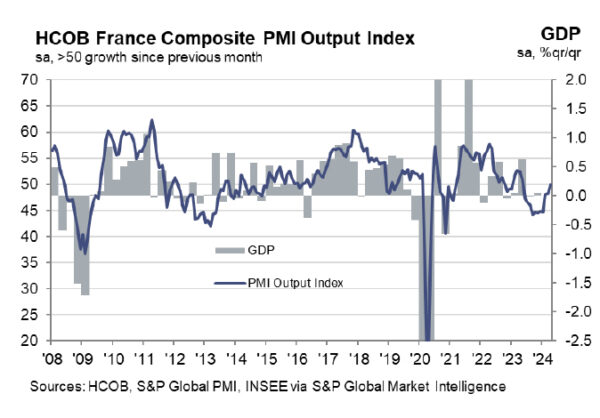

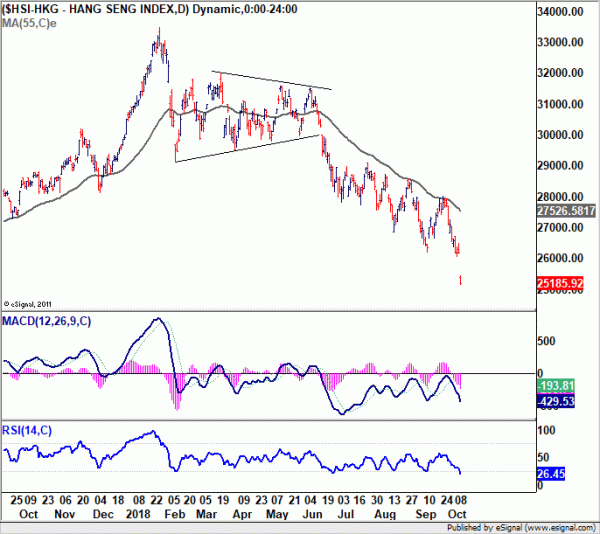
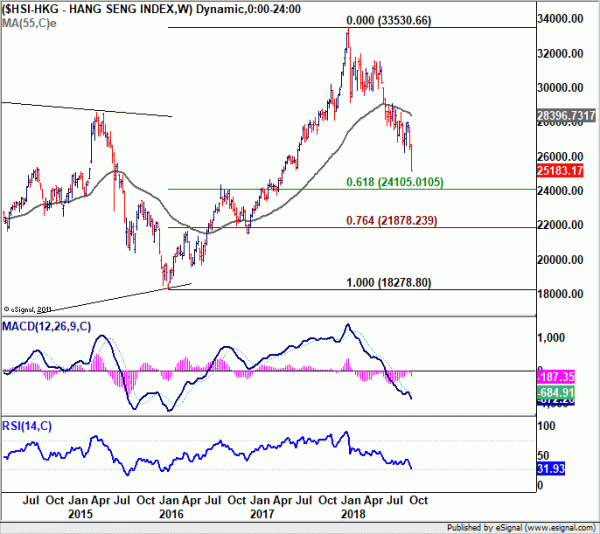
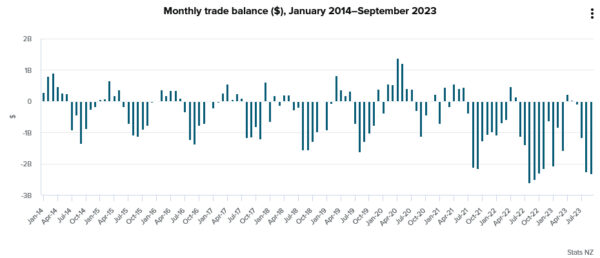
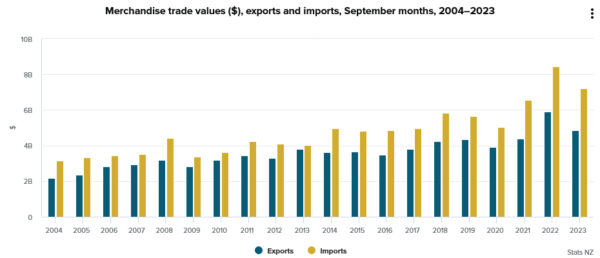
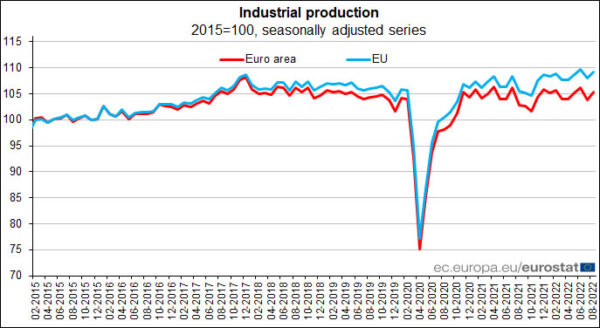
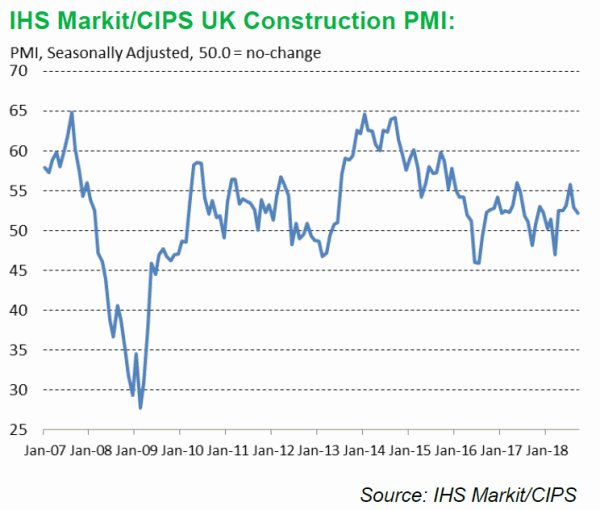
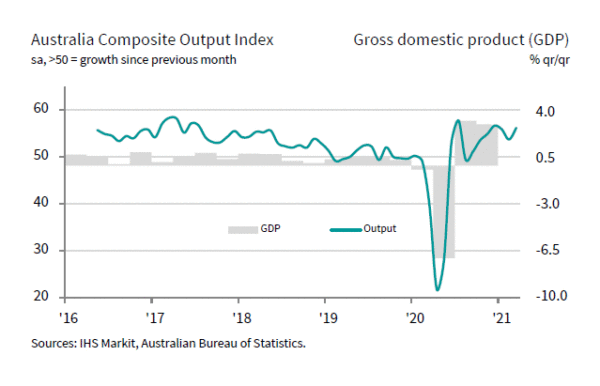
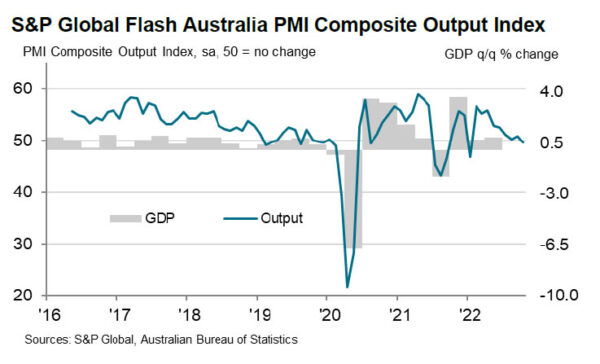
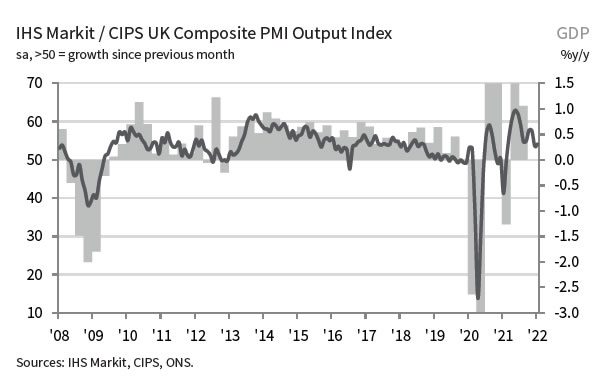
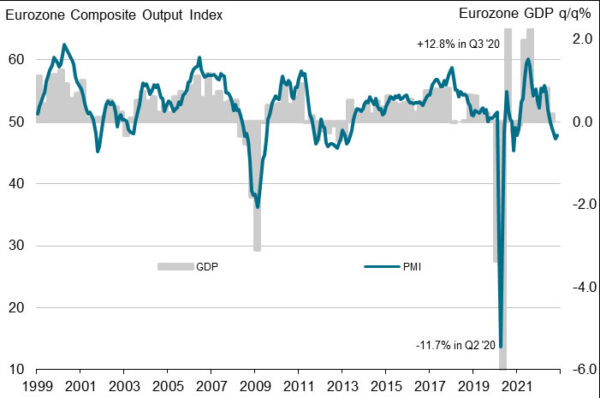
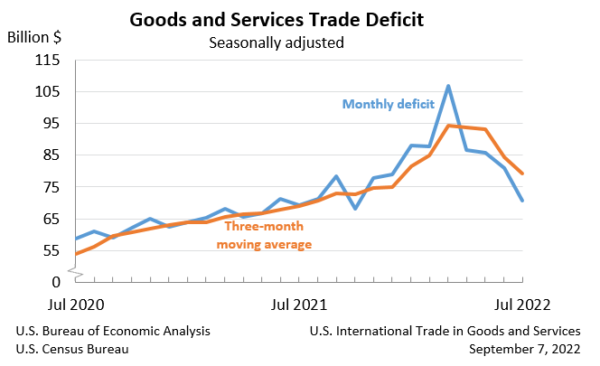

ISM services rises to 53.4, employment expands, price index leaps
US ISM Services PMI marked a significant uptick from 50.6 to 53.4 in January, above expectation of 52.1. This highlights a strengthening in the services sector
A closer look at the index components reveals stable business activity level, with the production sub-index holding steady at 55.8. New orders rose from 52.8 to 55.0, indicating growing demand for services.
A remarkable aspect of this month’s report is the sharp rebound in employment, which soared from 43.8 to 50.5, signaling a return to expansion territory. This significant leap, the largest month-over-month increase since January 2021. Comments from respondents include: “Ramping up head count as projects come on line” and “Highly competitive market due to salary, demand and turnover.”
Inflationary pressures within the sector also intensified, with the prices index jumping from 56.7 to 64.0, marking the most considerable month-over-month increase since August 2012.
Historically, January’s reading of 53.4% is indicative of 1.5% annualized growth in real GDP.
Full ISM services release here.